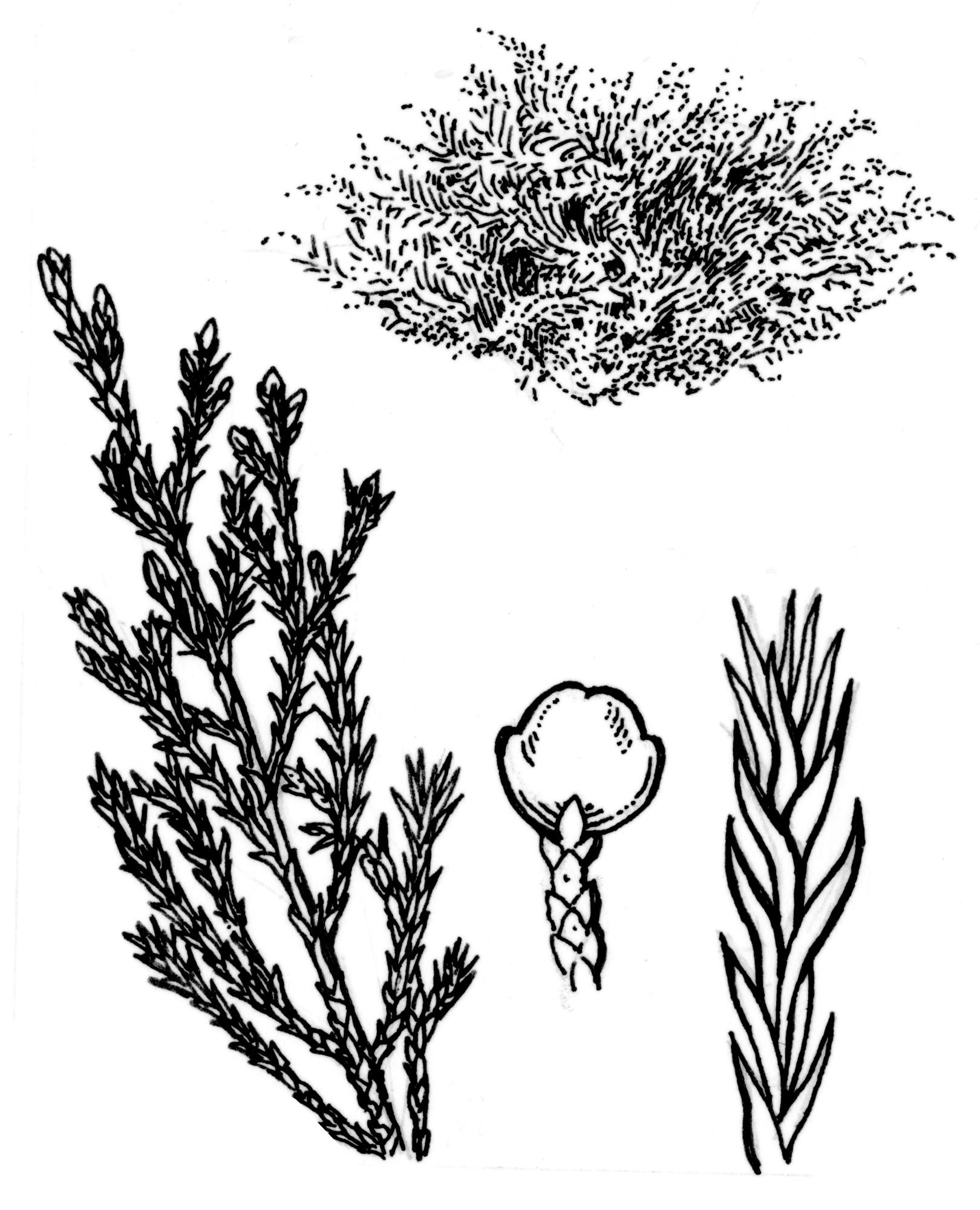
Spreading shrubs. Branchlets slender, about 1 mm wide at the ends. Needle leaves in pairs, 3-5 mm long with 2 white bands above the base extending down the stem. Scale leaves 1-1.5 mm long in opposite pairs, ovate, mostly blunt, occasionally pointed on leading shoots, mostly dark green. Male and female cones usually on separate plants. Fruit 5-8 mm wide, ovoid to spherical, generally ripening in the first year to a waxy blue-black. Seeds 1-3.
S & C Europe to W Siberia.
Leaves generally dark green with a distinctive unpleasant smell when crushed (oil of savin); cones on curved stalks.
Source: (1995). Cupressaceae. In: . Horticultural Flora of South-eastern Australia. Volume 1, Ferns, conifers & their allies. The identification of garden and cultivated plants. University of New South Wales Press.

Juniperus sabina 'Blue Danube'
Low widespreading shrub with the branch tips upturned. Leaves mostly scale-like. Original and preferable name 'Blaue Danau'. Distributed as unnamed seedling by l. Visser, Preszbaum, Austria, and introduced by Blaauws Nsy, Boskoop, Netherlands.
Dwarf, low, spreading male plant thickening in the centre with age, the shorter branches rising upwards; foliage bright green. Seedling imported by D. Hill Nsy, Dundee, Illinois, usa from Russia c. 1934 and introduced by Grootendoorst Nsy, Boskoop, Netherlands.
Like the species but low and wide with bright green needles. Seedling imported by d. Hill Nsy, Dundee, Illinois, USA from Russia c. 1934.
Juniperus sabina 'Erecta Glauca'
Upright shrub with thin, open branches. Leaves waxy green, scale-like. Probably originating from Netherlands.
Narrow, columnar, growing to several metres tall. Leaves mostly scale-like, dark waxy green. Origin Netherlands.
Blue-foliage, disease resistant. Monrovia Nsy, Azusa, California, USA c. 1976.
Juniperus sabina 'Tamariscifolia'
Low shrub, leaves mostly needle-like, bluish. A clone of a variety growing naturally in s Europe for several hundred years.
Slow growing with the branches widespreading white variegated and drooping slightly at the tips. Leaves mostly scale-like. Long cultivated, possibly with several clones and therefore best treated as a group name. Origin unknown.